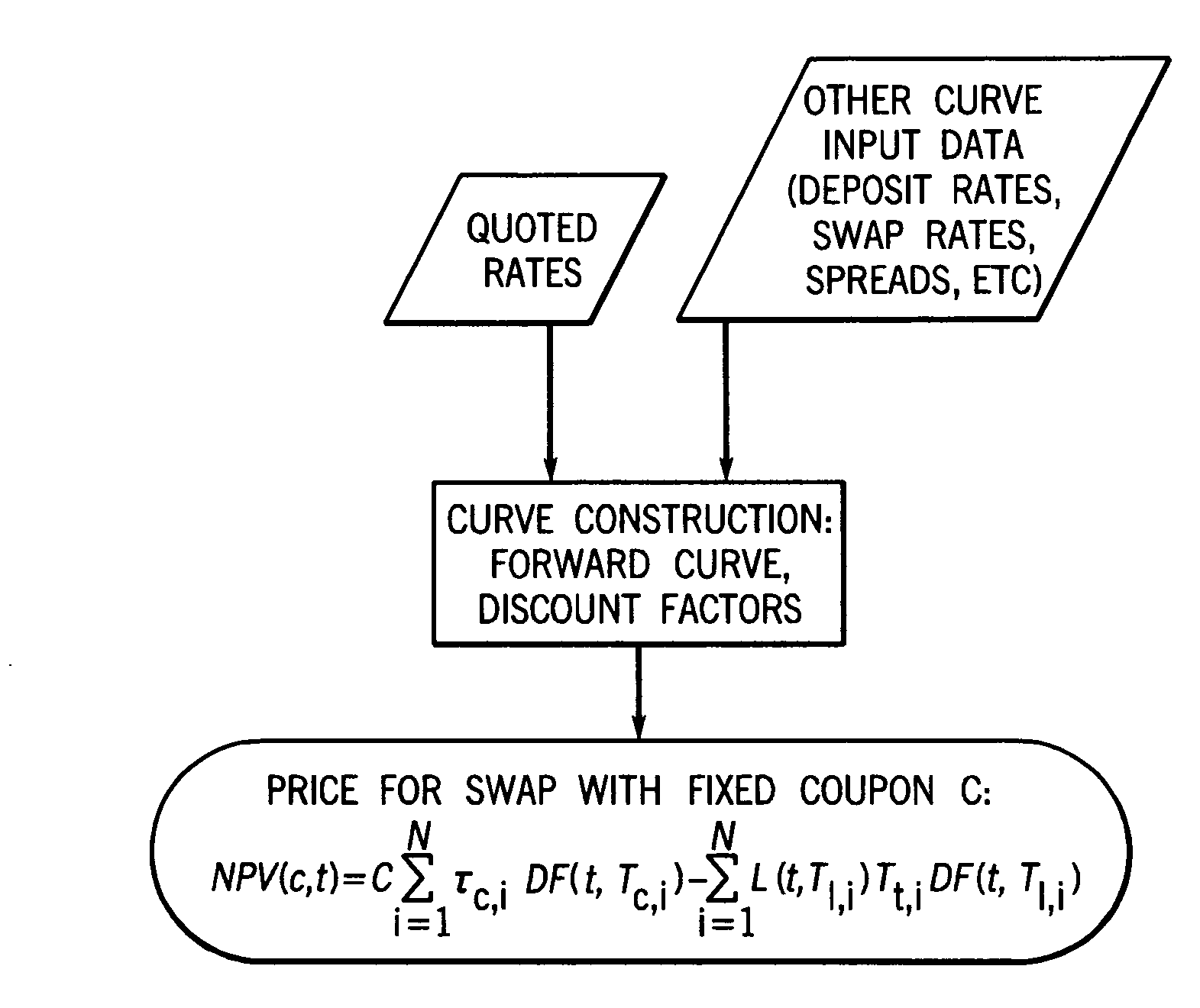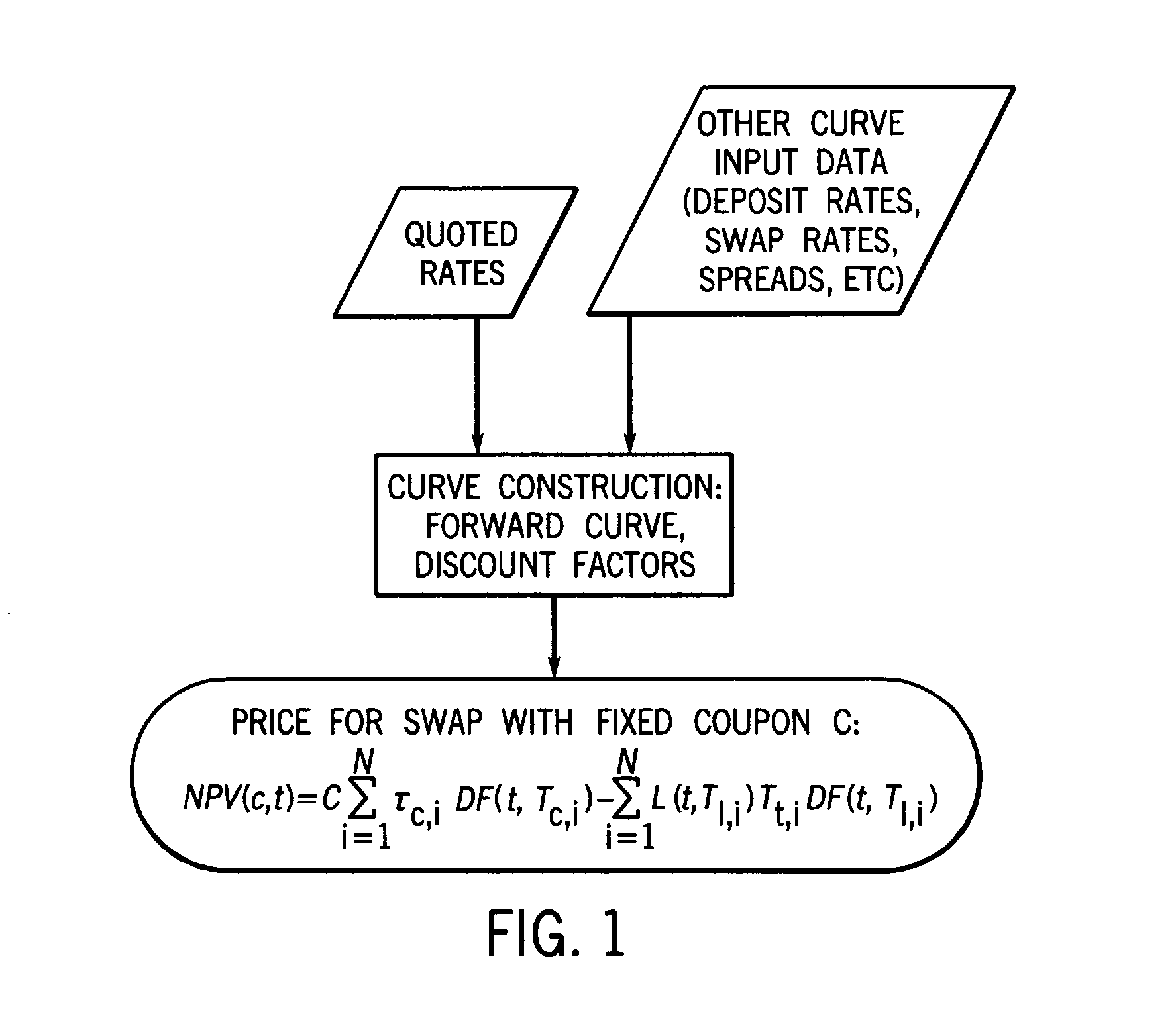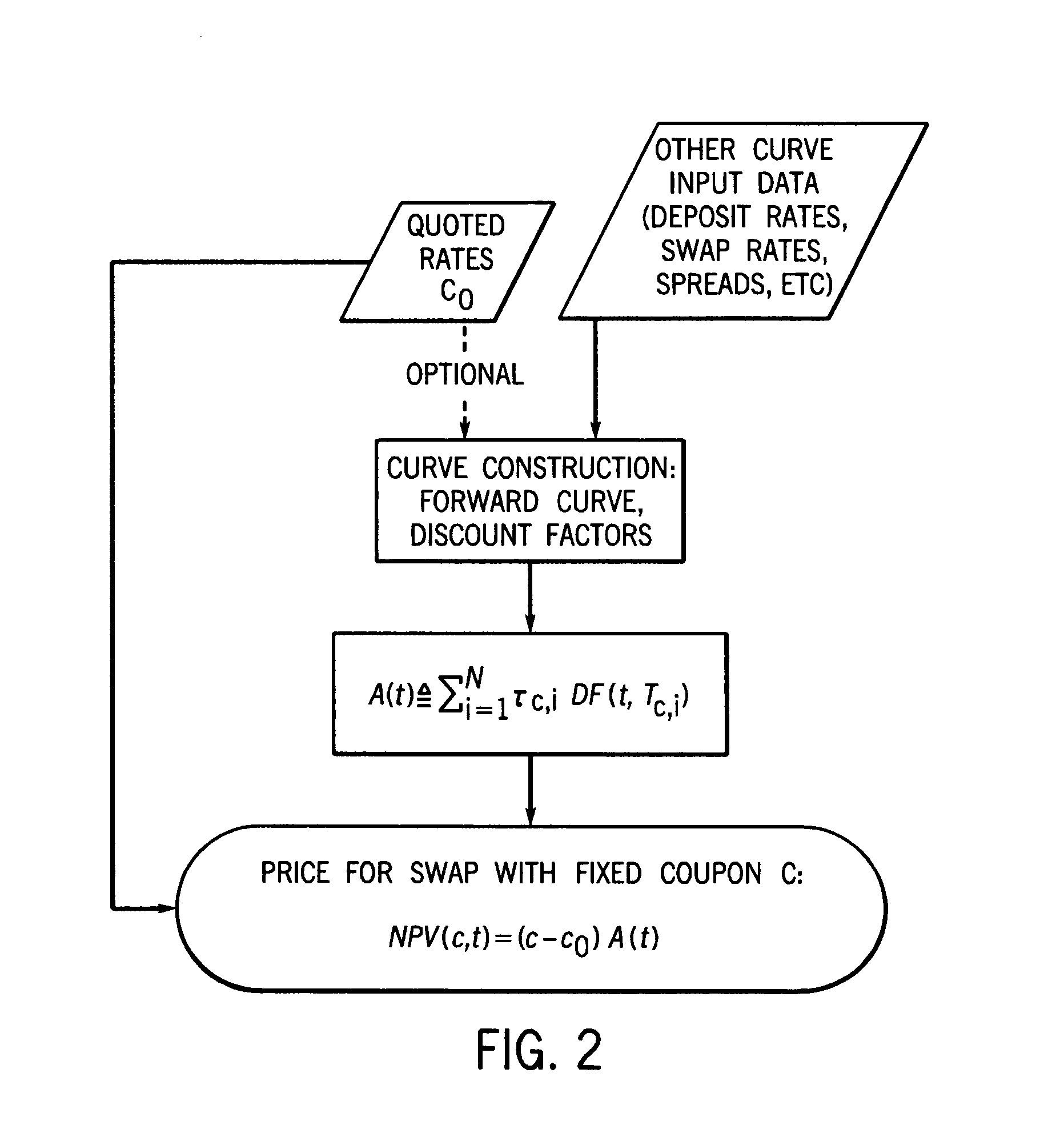Rate-negotiated, standardized-coupon financial instrument and method of trading
- Summary
- Abstract
- Description
- Claims
- Application Information
AI Technical Summary
Benefits of technology
Problems solved by technology
Method used
Image
Examples
example 1
[0099]This example shows the negotiated par coupon for a spot starting swap can be converted to a price for fixed coupon swap using Equation 1 directly.
[0100]Consider a spot starting 10-year LIBOR interest rate swap with notional amount of $1,000,000. The fixed coupon is set to be 3.5%, and the trades are negotiated in terms of the par coupon. Assume that the discounting curve is an OIS curve, and the forward curve is a LIBOR curve. A set of LIBOR swap rates, Eurodollar rates, and swap spreads are used to construct the OIS curve and LIBOR curve. When a trade is consummated, and a par coupon is agreed on, this coupon is passed in as an input to the yield curve construction, and forward rates and discount factors are updated accordingly. Then Equation 1 is used to compute the price of the 3.5% swap. Table 1 is an example of the quoted coupon and the corresponding price:
TABLE 1Par coupon3.403.423.443.463.48Price88327065529835311765
example 2
[0101]This example shows the negotiated par coupon for a spot starting swap can be converted to a price for fixed coupon swap using Equation 2. This yields the same result as in Example 1.
[0102]Consider the same spot starting 10-year LIBOR interest rate swap with notional amount of $1,000,000 as in Example 1. Because the change in the swap rates effects the discounting (OIS) curve by the curve construction method in the current example, the annuity in Equation 2 needs to be updated when the par coupon is quoted in a trade. Table 2 shows the annuity as well as the price for the 3.5% coupon swap at different levels of the quoted par coupon:
TABLE 2Par coupon3.403.423.443.463.48Annuity883.21883.09882.97882.85882.73Price88327065529835311765
Take the third column, for example, with the quoted par coupon=3.44%, the price for the 3.5% coupon is 100*(3.5−3.44)*882.97=5298.
example 3
[0103]This example shows a good approximation is obtained when the annuity Mt) is pre-computed. The same set-up as in Example 2 is used.
[0104]In most of the curve construction methodology, the sensitivity of the annuity with respect to the par coupon is small, if exists at all. Therefore in practice, the annuity can be pre-computed and published periodically. When a par coupon is negotiated in a trade, it can be directly plugged into Equation 2 to compute the price without updating A(t).
[0105]Consider the same swap example as in Example 2. Assume that the annuity of 882.97 is the latest update when the market prevailing 10-year swap rate is 3.44%. Table 3 shows the conversion from quoted par coupon to the price of 3.5% coupon swap using the fixed annuity:
TABLE 3Par coupon3.403.423.443.463.48Annuity882.97882.97882.97882.97882.97Price88307064529835321766
Take the first column, for example, with the quoted par coupon=3.4%, the price for the 3.5% coupon is 100*(3.5−3.40)*882.97=8830.
PUM
 Login to View More
Login to View More Abstract
Description
Claims
Application Information
 Login to View More
Login to View More - R&D
- Intellectual Property
- Life Sciences
- Materials
- Tech Scout
- Unparalleled Data Quality
- Higher Quality Content
- 60% Fewer Hallucinations
Browse by: Latest US Patents, China's latest patents, Technical Efficacy Thesaurus, Application Domain, Technology Topic, Popular Technical Reports.
© 2025 PatSnap. All rights reserved.Legal|Privacy policy|Modern Slavery Act Transparency Statement|Sitemap|About US| Contact US: help@patsnap.com



